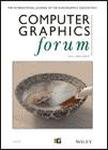版权所有:内蒙古大学图书馆 技术提供:维普资讯• 智图
内蒙古自治区呼和浩特市赛罕区大学西街235号 邮编: 010021

作者机构:Xi An Jiao Tong Univ Xian Peoples R China UCL London England
出 版 物:《COMPUTER GRAPHICS FORUM》 (计算机图形学论坛)
年 卷 期:2023年第42卷第7期
页 面:e14982-e14982页
核心收录:
学科分类:08[工学] 0835[工学-软件工程] 0812[工学-计算机科学与技术(可授工学、理学学位)]
基 金:New Technology & New Business in Tang Dou Hospital, (XJSXYW2021001) Special Key Projects of Guiding Technological Innovation in Shaanxi Province, (2021QFY01‐03) National Natural Science Foundation of China, NSFC, (62072366) National Natural Science Foundation of China, NSFC National Key Research and Development Program of China, NKRDPC, (2022YFB3303200) National Key Research and Development Program of China, NKRDPC
主 题:CCS Concepts center dot Computing methodologies -> Shape modeling Reconstruction
摘 要:We propose a new method to reconstruct the 3D human body from RGB-D images with occlusions. The foremost challenge is the incompleteness of the RGB-D data due to occlusions between the body and the environment, leading to implausible reconstructions that suffer from severe human-scene penetration. To reconstruct a semantically and physically plausible human body, we propose to reduce the solution space based on scene information and prior knowledge. Our key idea is to constrain the solution space of the human body by considering the occluded body parts and visible body parts separately: modeling all plausible poses where the occluded body parts do not penetrate the scene, and constraining the visible body parts using depth data. Specifically, the first component is realized by a neural network that estimates the candidate region named the free zone, a region carved out of the open space within which it is safe to search for poses of the invisible body parts without concern for penetration. The second component constrains the visible body parts using the truncated shadow volume of the scanned body point cloud. Furthermore, we propose to use a volume matching strategy, which yields better performance than surface matching, to match the human body with the confined region. We conducted experiments on the PROX dataset, and the results demonstrate that our method produces more accurate and plausible results compared with other methods.